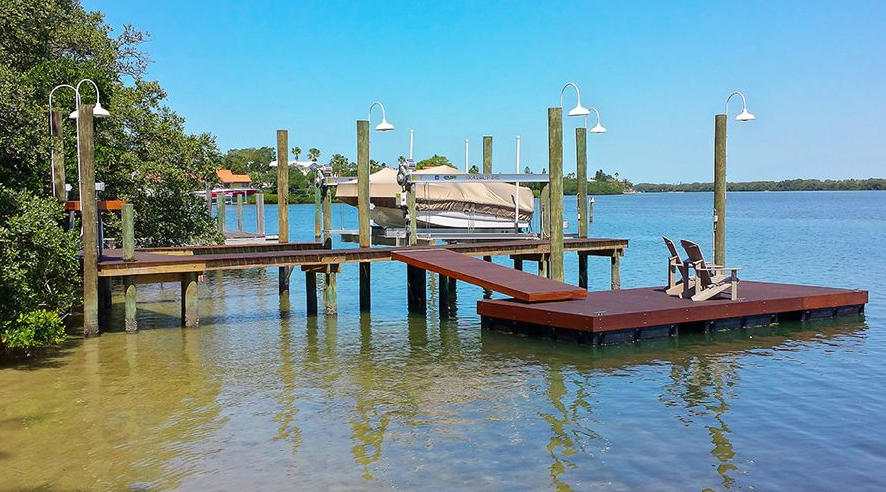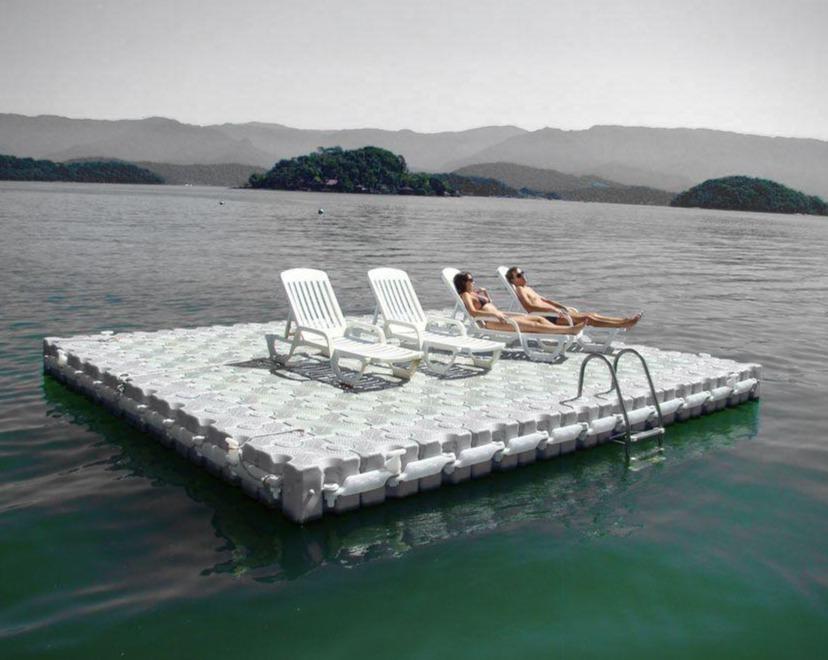Floating Docks: The Perfect Option for Versatile Water Access
Floating docks existing an engaging remedy for a variety of water gain access to requires, offering adaptability that goes beyond traditional mooring options. Their capacity to adjust to fluctuating water levels while making sure stability and safety and security makes them especially beneficial for both entertainment and industrial applications. Additionally, the modular nature of floating docks facilitates customization, accommodating particular demands. However, the subtleties of installation and maintenance, alongside the variety of applications, necessitate a closer evaluation to completely appreciate their potential benefits and implications for river access techniques.
Benefits of Floating Docks
Floating docks deal many advantages that boost water accessibility for different applications. Their ability to fall and climb with altering water levels makes them specifically useful in settings with changing tides or seasonal variants. This adaptability makes certain that vessels can quickly moor without problem for the water's deepness, supplying a trustworthy platform for leisure, commercial, and commercial usages.
In addition, floating docks are often built from durable materials that withstand deterioration, making them suitable for long-lasting usage in aquatic environments. Their setup is commonly less invasive than standard set docks, reducing the environmental influence and helping with quicker deployment (floating docks). This flexibility permits easier relocation or reconfiguration according to individual requirements or ecological adjustments
Safety and security is another vital benefit; floating docks can provide stable access for individuals disembarking or boarding from watercrafts and reduce the threat of crashes linked with unpredictable surface areas. In addition, they can be developed to fit a variety of accessories, such as cleats and fenders, boosting capability. In general, floating docks represent an effective solution for improving water gain access to across diverse sectors while advertising security and environmental sustainability.

Kinds Of Floating Docks
Various kinds of floating docks deal with various requirements and environments, each created with specific features to enhance functionality. The most typical kinds include modular docks, which consist of interlocking areas that enable simple modification and expansion. These docks are ideal for leisure usage, as they can be tailored to fit various watercraft dimensions and water problems.
Another popular choice is the fixed floating dock, which remains anchored in position yet drifts with changing water levels. floating dock builder. This kind is particularly suited for areas with very little tidal changes, giving secure access for fishing or swimming. Furthermore, there are drive-on docks, which include a sloped style that permits watercrafts to conveniently drive on and off, making them ideal for individual boat and smaller sized vessels
For commercial applications, heavy-duty floating docks are readily available, built from reinforced materials to hold up against significant tons and severe aquatic environments. Green floating docks utilize sustainable products and layouts to lessen environmental effect, commonly integrating features like vegetation to support local wildlife. Understanding the various kinds of floating docks makes certain that customers can choose the most appropriate remedy for their details needs.
Installment Refine Summary
An effective installation of floating docks requires mindful planning and focus to detail to ensure optimal efficiency and security. The initial action involves analyzing the site problems, including water depth, existing, and potential barriers. This assessment educates the selection of the proper dock materials and style tailored to the certain environment.
Following, obtaining needed permits is essential, as many jurisdictions have guidelines concerning building and construction on water bodies. The installation can continue as soon as consents are protected. Begin by preparing the structure, which may include anchoring systems or pilings tailored to the dock kind and local conditions.
Adhering to the structure setup, set up the dock areas according to manufacturer requirements. Make certain that all components are safely secured and straightened to withstand environmental tensions. Placement the dock in the marked area, ensuring it is level and steady.

Maintenance Tips and Best Practices
After the installment procedure is total, continuous maintenance plays index an essential role in making sure the long life and capability of floating docks. Routine inspections ought to click here for more info be conducted to identify any kind of signs of degeneration, wear, or damages - floating dock builder. Look for any loosened installations, fractures, or splitting up in the dock areas, as these can endanger structural honesty
Cleaning the dock is essential to get rid of particles, algae, and other accumulation that can influence its look and security. Use a mild pressure laundry regularly to maintain sanitation without causing damages to the surface. Furthermore, using a safety sealer every few years can assist boost long life and stand up to ecological wear.
Take note of the mooring lines and supports, ensuring they are safe and secure and free from corrosion. Change any type of abject parts without delay to avoid hazards. Seasonal modifications may additionally be essential; throughout extreme weather, enhancing the dock or repositioning can protect against damage.
Applications for Floating Docks
Floating docks serve a wide variety of applications, satisfying both commercial and recreational requirements. In leisure settings, they give smooth access to rivers for tasks such as boating, angling, and swimming. Their flexible nature permits setup in varying water levels, guaranteeing secure and risk-free accessibility no matter tidal variations.
Commercially, floating docks are indispensable for marinas and beachfront services. They help with the docking of vessels, allowing effective dumping and packing of items. Their modular style permits very easy growth or reconfiguration to suit altering business demands, making them perfect for boat services, excursion operations, or angling charters.
Additionally, floating docks are utilized in environmental applications such as aquatic research study and habitat reconstruction. They can act as systems for scientific studies, keeping an eye on water quality, or carrying out wildlife studies without disturbing sensitive environments.
In industrial contexts, floating docks are used in construction projects, offering access to hard-to-reach locations for tools and employees. Their flexibility, longevity, and minimal influence on the environment make them an optimum choice for a variety of applications, improving both click for source performance and availability in various water-based environments.
Verdict
In conclusion, floating docks stand for an optimum service for varied water access requires, owing to their versatility, sturdiness, and modular style. Floating docks serve as a beneficial asset for recreational, industrial, and ecological projects, making sure trustworthy accessibility to waterways and promoting lasting techniques in aquatic atmospheres.
Floating docks present an engaging solution for a range of water access requires, supplying versatility that transcends traditional mooring alternatives.Floating docks offer countless advantages that enhance water access for different applications. On the whole, floating docks represent an effective solution for boosting water accessibility throughout varied markets while promoting safety and environmental sustainability.
An additional preferred choice is the stationary floating dock, which continues to be secured in location but drifts with transforming water levels.In conclusion, floating docks represent an optimum option for diverse water access requires, owing to their versatility, longevity, and modular style.